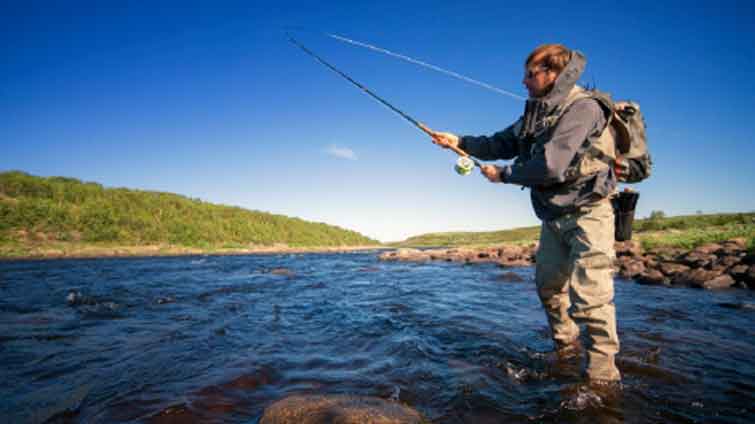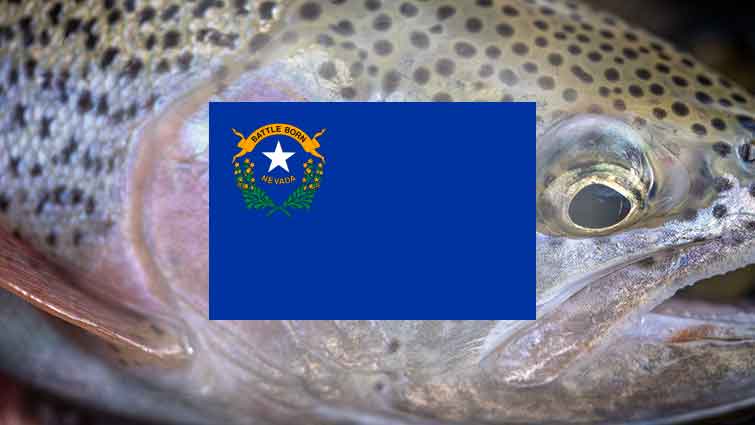Imagine standing by the serene bank of a crystal-clear river, surrounded by nature's tranquil beauty. The gentle breeze carries the scent of the wild, and the rhythmic sounds of flowing water create a symphony that soothes your soul.
In this idyllic setting, fly fishing emerges as more than just a hobby or pastime; it becomes an art form, a dance between angler and fish. At the heart of this dance lies the essential skill of fly casting—a technique that separates the novice from the seasoned angler.
In this article, we delve into the intricacies of fly casting, exploring the techniques, tools, and mindset required to become a proficient caster. We will cover everything from understanding the basic components of a fly rod to dissecting the mechanics of the perfect cast.

Why Mastering Fly Casting Techniques Matter
Why is it important to try and master the most popular fly casting techniques? Here are some of the main reasons:
Increased Accuracy and Presentation
Mastering fly casting techniques is crucial for achieving accurate and precise fly placement on the water.
With finesse and control, skilled anglers can present their flies delicately, mimicking the natural movement of insects and enticing even the most wary fish to strike. By developing a mastery of casting techniques, anglers can consistently deliver their flies to the desired target, increasing their chances of success on the water.
Versatility and Adaptability
Fly casting mastery grants anglers the ability to adapt to various fishing situations and environments. Different fishing scenarios call for different casting techniques, such as long-distance casts, roll casts, or accurate casts in tight spaces.
By honing their skills, anglers gain the versatility to tackle diverse fishing conditions, whether it's casting across a wide river, maneuvering through dense vegetation, or navigating challenging wind conditions.
The ability to adapt and choose the most effective casting technique for a given situation enhances an angler's success and enjoyment on the water.
Improved Efficiency and Angling Experience
Mastering fly casting techniques can greatly improve an angler's efficiency and overall angling experience. Casting efficiently means spending less time untangling lines, making unnecessary false casts, or struggling with accuracy.
A well-executed cast requires minimal effort and maximizes the time spent with the fly in the water, increasing the chances of hooking into fish. Moreover, a proficient caster experiences a deeper connection with the water, the fly, and the fish, creating a more immersive and rewarding angling experience.
Clearly, honing your fly casting skills can dramatically enhance your fishing experiences. Let's dive into the three essential tips and techniques that can make that a reality for you.

Understanding the Types of Fly Casts
Overhead Cast
The overhead cast is the foundation of fly casting and involves propelling the line forward in a smooth, arcing motion. It is the most common cast used by fly anglers and allows for accurate and controlled fly placement.
False Cast
The false cast, a variation of the overhead cast, involves making additional back-and-forth casts without landing the fly. This technique is useful for adjusting line length, changing direction, and gauging distance.
Roll Cast
Roll casts are essential for fishing in tight spaces or when obstacles obstruct the backcast. The standard roll cast involves sweeping the rod tip backward close to the water's surface, loading the rod, and then driving it forward to roll the line out onto the water. This cast is efficient for short to moderate distances, it’s great for hitting tight areas for smallmouth bass too.
Tuck Cast
The tuck cast is a specialized casting technique primarily used in nymphing or fishing with weighted flies. It involves initiating a standard overhead cast, but at the end of the forward stroke, abruptly stopping the rod tip and allowing the fly line to "tuck" or dive beneath the surface of the water.
This action helps to eliminate slack in the leader and ensures that the fly sinks quickly to the desired depth, mimicking the natural behavior of nymphs or other subsurface insects.

Mastering the Timing and Rhythm
Just as a drummer sets the rhythm for a band, timing and rhythm set the pace for your fly casting. Once you've got a grip on the basics, it's time to synchronize your movements to create a fluid casting motion.
Think of the classic "ten-to-two" rule. Imagine a clock face in your mind. Your back cast (the part where you pull the rod back) should ideally stop when your rod is pointing at ten. Your forward cast (where you push the rod forward to cast the line) should stop when your rod is at two. This rule helps you keep your casting stroke short and efficient, like a well-oiled machine.
Practicing your timing and rhythm can be made more effective with a steady beat. Try casting in rhythm to a metronome or even to your favorite song. The rhythmic beats can guide your motion and improve your timing. You could even count in your head, "back-and-two-and...", like a catchy tune you can't get out of your head.
Perfecting your timing and rhythm can significantly improve your casting distance and accuracy. It's like upgrading your fishing rod to a precision instrument. So, find your beat and let's get casting!
Adapting to Different Weather and Water Conditions
Mother Nature is often unpredictable. The weather can change from sunny to stormy in an instant, and the water can range from calm and serene to rapid and tumultuous. To become a proficient fly caster, it's essential to learn how to adapt your techniques to these ever-changing conditions.
Rain, wind, or bright sunshine - each has its impact on fly casting. Among these, the wind is particularly notorious. A favorable wind can help your fly sail far and wide, but an unfavorable wind direction can send your fly wildly off course. The key here is to adjust your casting stroke to be tighter and low against the wind.
The same principle applies to different water conditions. A placid lake requires a different casting technique compared to a fast-flowing river. Practice adjusting your casting distance and angle to cater to the water's depth and current.
The best way to ace this? Go fishing in all sorts of conditions! The more diverse your experiences are, the better you'll be at adapting to different situations. You can also simulate various conditions at home. Try casting with a fan blowing to mimic wind, or set different targets to imitate varying water conditions.
Tools and Equipment for Effective Fly Casting
Finally, let's discuss gear. Just as a professional runner wouldn't run a marathon in flip-flops, a seasoned angler knows the importance of using the right equipment for effective fly casting.
The world of fishing gear is wide and varied. There's a myriad of options when it comes to rods, lines, and flies, and the right choice largely depends on your fishing preferences and conditions.
Fly rods are rated by weight, typically ranging from 1 to 12, with 1 being the lightest and 12 being the heaviest. The weight of the rod correlates to the size of the fly line it is designed to cast and the type of fish you intend to target.
Lighter weight rods (1-4) are commonly used for small streams and pursuing smaller species, while heavier rods (7-12) are suitable for larger fish and more demanding fishing scenarios, such as saltwater or big rivers.
Consider the type of fishing you plan to engage in, the average size of the fish you'll be targeting, and the size of flies you'll be casting to determine the appropriate rod weight.
If you're a beginner, a medium-action rod is a good place to start. It's versatile, relatively easy to handle, and can be used in a variety of fishing conditions. Pair it with a weight-forward line, which is designed to help you make longer casts with ease.
As for flies, it's useful to have a diverse selection. Different fish are attracted to different flies, so think of it as choosing the right flavor of bait for your target.
The priciest gear isn't always the best. What's more crucial is finding equipment that suits you, your style, and the kind of fishing you're into. So, explore, experiment, and find what works best for you. Happy casting!
Conclusion
As we reach the end of this blog, let's take a moment to reel in our line and reflect on what we've learned. We started by exploring why fly casting skills are so important in the sport of fishing - how they can turn an ordinary day on the water into an unforgettable experience.
We then dove into three vital tips to elevate your fly casting skills: understanding and perfecting the basics, mastering the rhythm and timing, and adeptly adapting to different weather and water conditions.
Each of these tips forms a crucial part of the fly casting puzzle, and the key to putting this puzzle together lies in continuous practice and learning. It's important to remember that each day on the water or each hour spent practicing in your backyard brings you one step closer to becoming the fly casting expert you aspire to be.
Contributed by:
Coty Perry
Coty comes from a long line of bass anglers but was one of the first (and only) people in his family to break away from the muck and mud to fish moving water. When he’s not chasing smallmouth on the Susquehanna River, he’s playing something involving a ball with his son.





